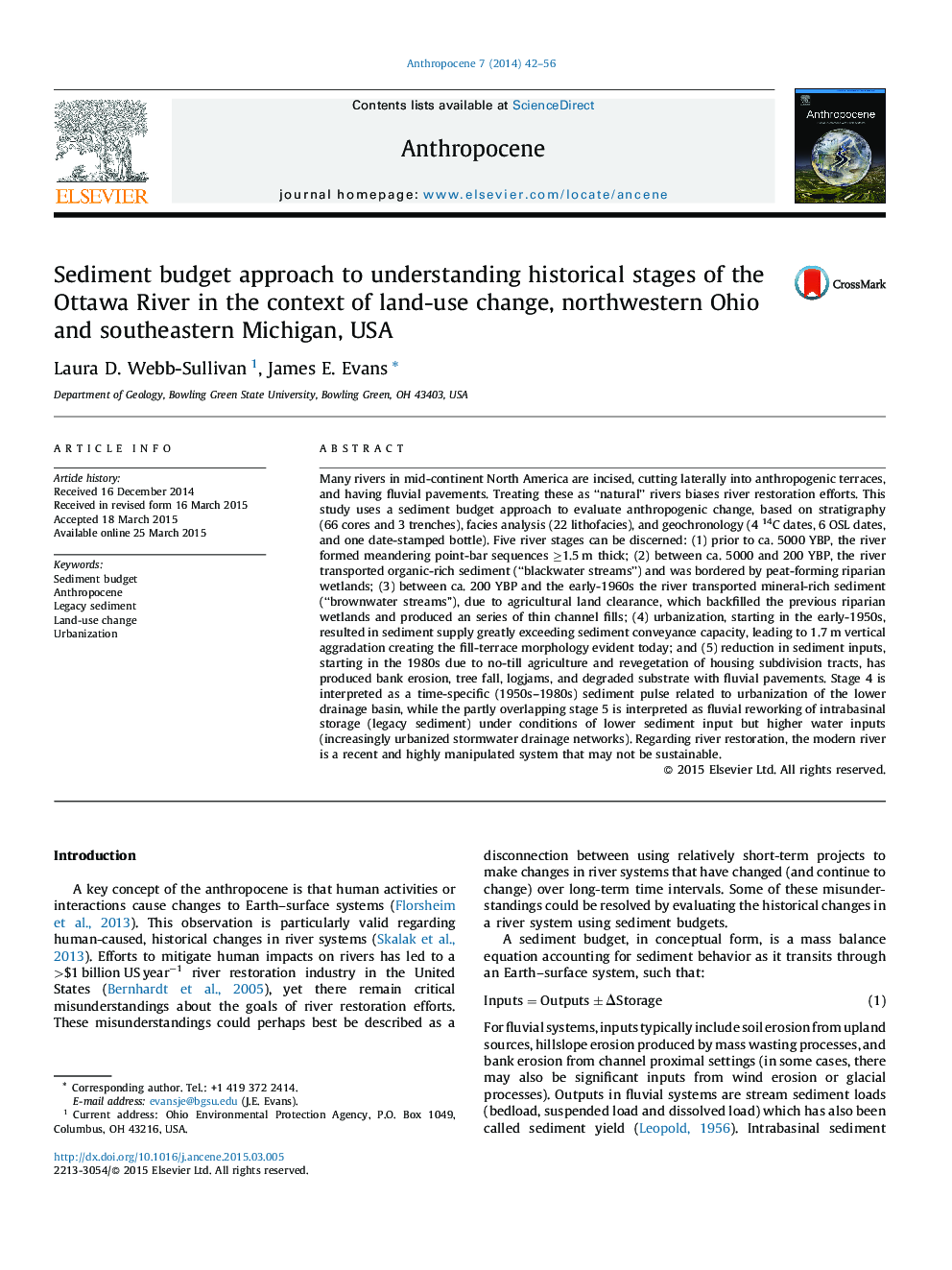| Article ID | Journal | Published Year | Pages | File Type |
|---|---|---|---|---|
| 4461898 | Anthropocene | 2014 | 15 Pages |
Many rivers in mid-continent North America are incised, cutting laterally into anthropogenic terraces, and having fluvial pavements. Treating these as “natural” rivers biases river restoration efforts. This study uses a sediment budget approach to evaluate anthropogenic change, based on stratigraphy (66 cores and 3 trenches), facies analysis (22 lithofacies), and geochronology (4 14C dates, 6 OSL dates, and one date-stamped bottle). Five river stages can be discerned: (1) prior to ca. 5000 YBP, the river formed meandering point-bar sequences ≥1.5 m thick; (2) between ca. 5000 and 200 YBP, the river transported organic-rich sediment (“blackwater streams”) and was bordered by peat-forming riparian wetlands; (3) between ca. 200 YBP and the early-1960s the river transported mineral-rich sediment (“brownwater streams”), due to agricultural land clearance, which backfilled the previous riparian wetlands and produced an series of thin channel fills; (4) urbanization, starting in the early-1950s, resulted in sediment supply greatly exceeding sediment conveyance capacity, leading to 1.7 m vertical aggradation creating the fill-terrace morphology evident today; and (5) reduction in sediment inputs, starting in the 1980s due to no-till agriculture and revegetation of housing subdivision tracts, has produced bank erosion, tree fall, logjams, and degraded substrate with fluvial pavements. Stage 4 is interpreted as a time-specific (1950s–1980s) sediment pulse related to urbanization of the lower drainage basin, while the partly overlapping stage 5 is interpreted as fluvial reworking of intrabasinal storage (legacy sediment) under conditions of lower sediment input but higher water inputs (increasingly urbanized stormwater drainage networks). Regarding river restoration, the modern river is a recent and highly manipulated system that may not be sustainable.
